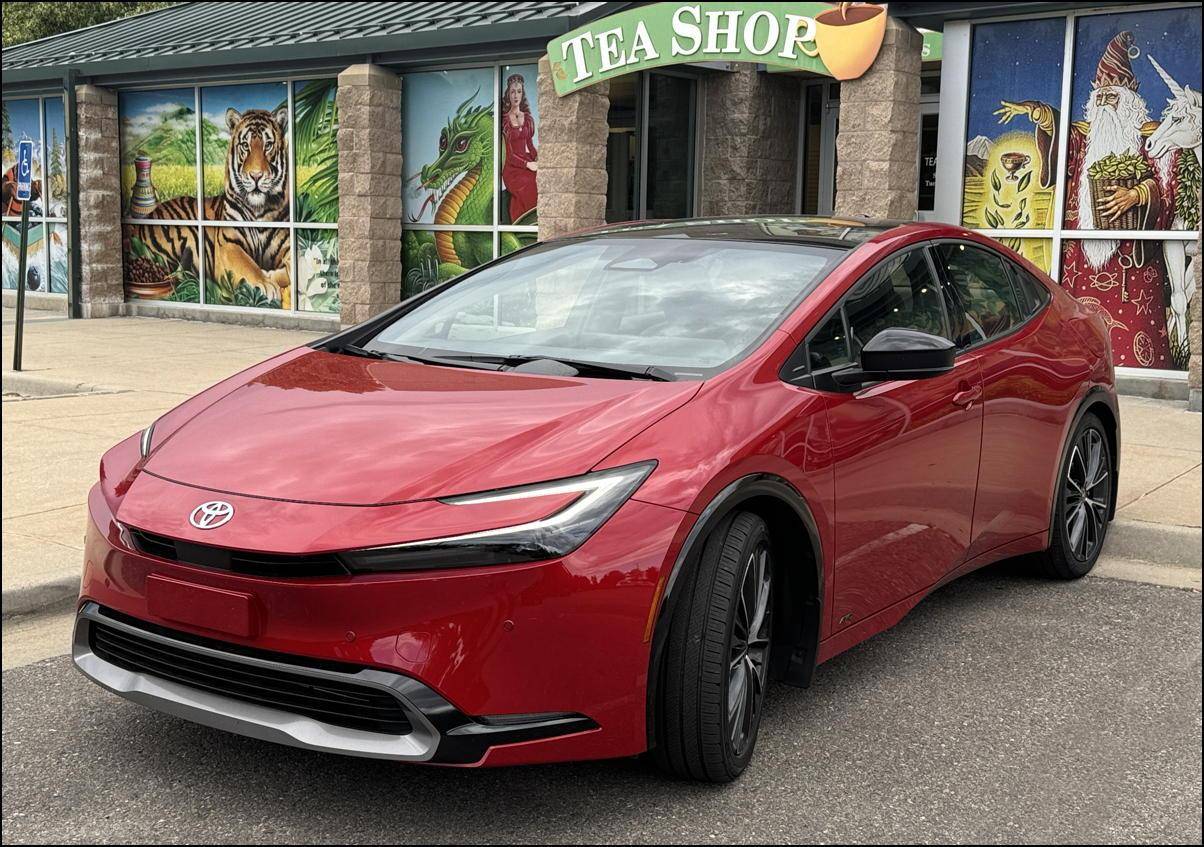The evolution of the Toyota Prius since being introduced in 1997 is the journey of consumer preference changes in car design. Starting out as the very first mass-produced hybrid vehicle and, to be candid, a dorky little sedan, the Prius has gone through multiple major evolutionary generations, each just a bit sleeker and more racy than the previous. With the 2024 vehicle, you can see design notes from the earlier vehicles, but it's also clear that Toyota's doubling down on its racing heritage too. It's surprising that there isn't a TRG (Toyota Racing Group) trim level amongst the six options (which doesn't factor in the plug-in hybrid "Prime" version's many trim levels).
I had a second-generation Prius many years ago and enjoyed it, though I did have various electrical problems that took way too long to diagnose. Suffice it to say, I'm familiar with the popular hybrid sedan that offers some of the best fuel efficiency in the market; the unit I drove is rated 49/50 mpg, which is a delight on longer drives. Toyota loaned me a Supersonic Red 2025 Toyota Prius XLE AWD and it drew all sorts of attention from people everywhere I parked:
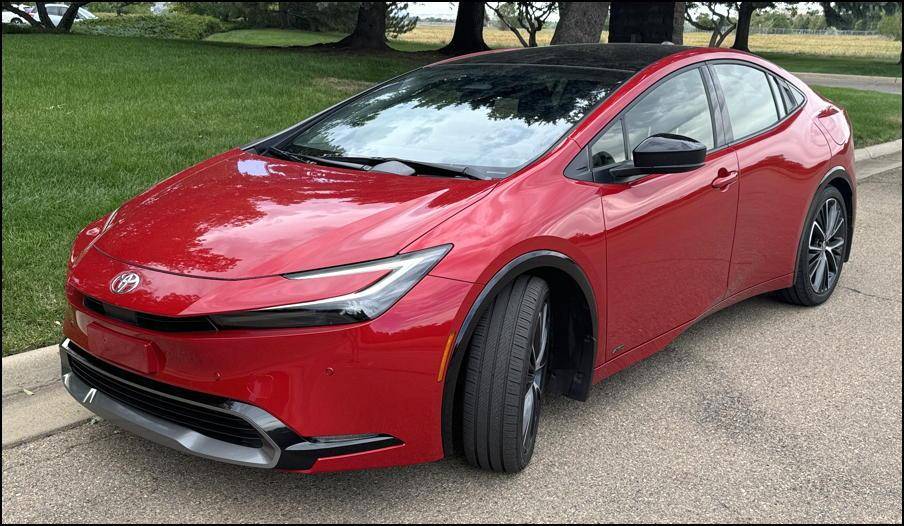
You can't tell with the doors closed, but the B-pillar has the usual Toyota placement problem and makes it awkward to get into or out of the vehicle. The B-pillar is the roof support beam between the front and back windows and it's often too far forward for taller drivers who have the seat pushed back for comfort. B-pillars have also been trending wider and thicker over time, which is why some luxury car makers have the seat automatically move forward for ingress, then slide back to the preferred position once the driver's seated.
Notice in the above photo the spot for the front license plate. It's the right height if you're going to drive this vehicle in Germany, Spain, or England, with their long, skinny plates, but for American plates, it's too short. This would seem to be a problem in Japan too given its predilection for more rectangular plates, but this is a design issue: The narrower front portion can't be taller without affecting the overall sleekness of the front.
Jumping into the driver's seat, the cockpit is one area where Toyota has done a great job with its modernization:
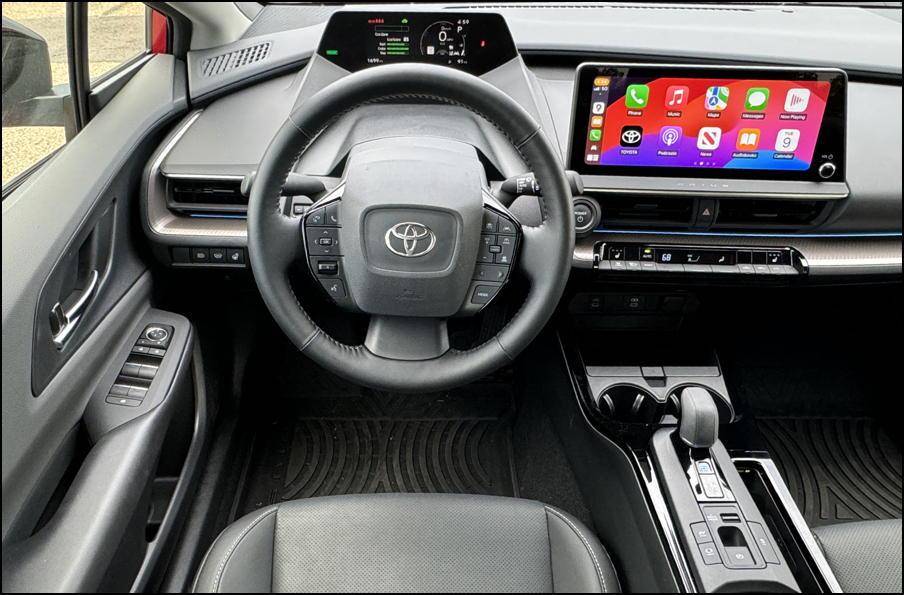
There's a nicely futuristic feel about every element, particularly the main gauge display behind the steering wheel, which is a long way from the "two big dials" of the speedometer and tachometer of older vehicles. Balancing this is the fact that the steering wheel has a lot of buttons:
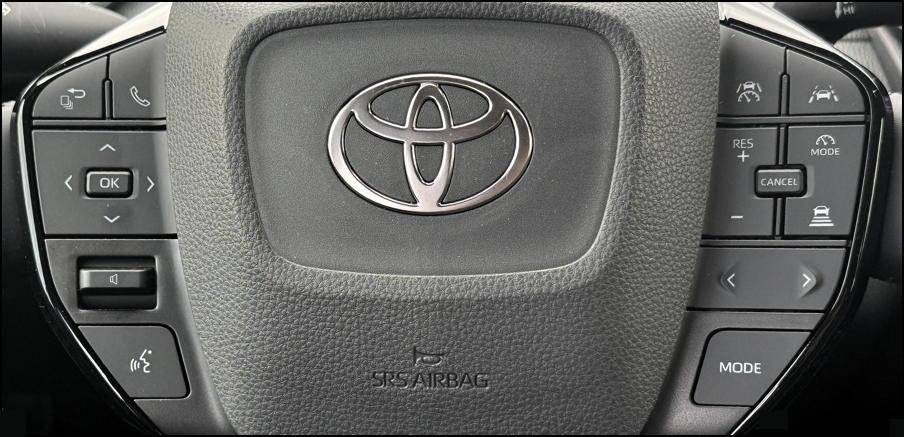
It took me a while to figure out the information screen on the main gauge display navigation (the four-way button with "OK" in the middle on the left side) because it lets you navigate through categories of information in one direction and options within a category in the other. One imagines some drivers simply ignoring it, never realizing they could change the display.
Speaking of the main gauge display, I loved it!

Lots of information on a bright, highly readable screen, including the gamified "EcoScore". These feedback mechanisms help teach drivers how to maximize fuel efficiency; I'm not doing very well at this moment in my drive, but generally, you want to just ease into every transition. Slow down gradually, accelerate patiently, change your cruise speed slowly, and you'll get a great EcoScore. Or you can just ignore it and drive, knowing that even with a few mpg penalty for being more aggressive, you've still got great fuel efficiency.
The Toyota EPA rating for this 2024 Prius XLE AWD is 49/50, for a combined 49mpg, but I have to admit that I never saw that, averaging 44.5mpg as my "best" over a few hundred miles of city and mountain driving. That's double the efficiency of most cars I drive so I won't complain, but it's also rare to see the EPA figures be so far off the actual driving experience. Perhaps I should have paid more attention to my EcoScore to improve things. :-)
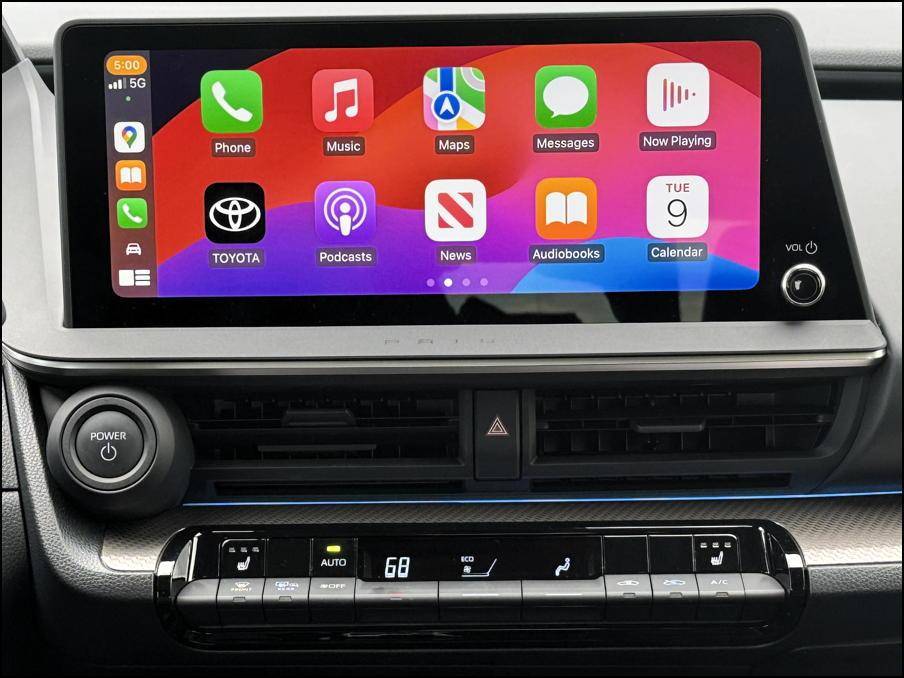
The big 12.3-inch infotainment system was great - it's a technology that Toyota's long since dialed in across its fleet of vehicles. Wireless CarPlay and Android Auto, an entirely acceptable 6-speaker sound system, and six USB ports located in both the front and back of the vehicle. The climate controls were also quite easy to use and offer an intuitive design that lets the driver keep their eyes on the road.
But there are buttons, lots of buttons, everywhere. I've rarely seen a busier central console, for example:
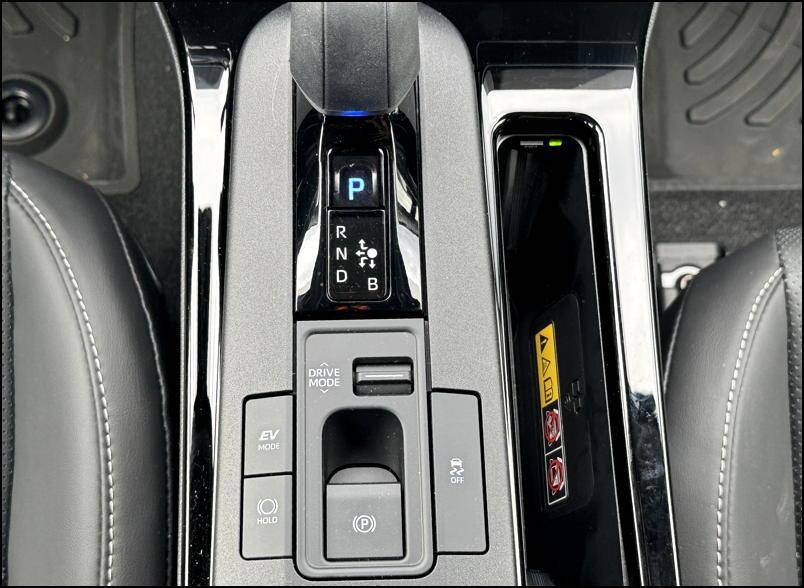
These are mostly controls you'll ignore, so it's not too bad, but there's one element that is worth discussing: The Qi wireless charging slot. It's on the right and I never had it work properly with my Apple iPhone 15 Pro. Not once, whether I had it in its MagSafe case or out of the case. Most car wireless chargers don't work in my experience, particularly on rougher terrain, but this was completely pointless and I ended up just using it as a place to stash my phone rather than get an iota of charge. Do you have a Toyota with a similarly designed Qi charger? Please share how it works for you and what smartphone you have!
I ended up having to upgrade from my own Prius to a big Toyota Highlander Hybrid as my kids grew up and kept toting more and more gear. Honestly, it seems like the back seat configuration hasn't changed much in the intervening years:
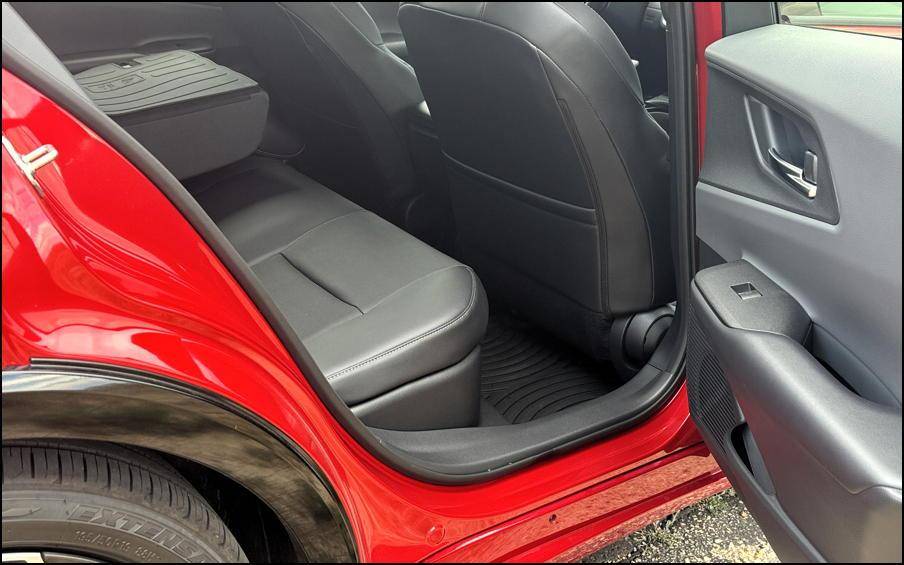
This amount of space in the 2024 Prius XLE can work for little ones, but it's going to be a squeeze for adults to be in the back seat, particularly if the front seat passenger and driver are tall enough that they need the seats pushed back for comfort. Many cars are stingy in their allocation of space for rear passengers, however, so this isn't so much a criticism of the Prius as of the design priorities of the industry.
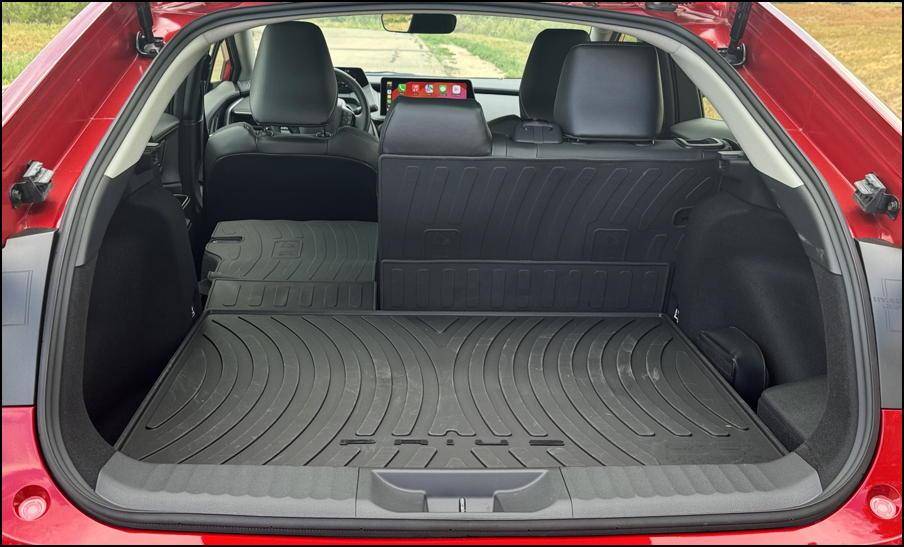
The cargo space in the very back is good for a sleek hatchback and you can see the 60/40 seats. This set of mats is a relatively inexpensive option with the Prius, as is the tonneau cover (not shown in the above photo so you could see the mats).
The drive experience was as good as I remembered with the earlier Toyota Prius Hybrid; the 2.0L DOHC 16-valve VVT-I 4-cylinder engine puts out a lot more power than you'd expect due to the hybrid system and its continuously variable (CVT) transmission. It's peppy and you can definitely weave right into highway traffic without a worry. Get up to speed, hit cruise control, and you're humming along at 45mpg (or better). What's not to love about that, particularly when combined with its sporty exterior design?
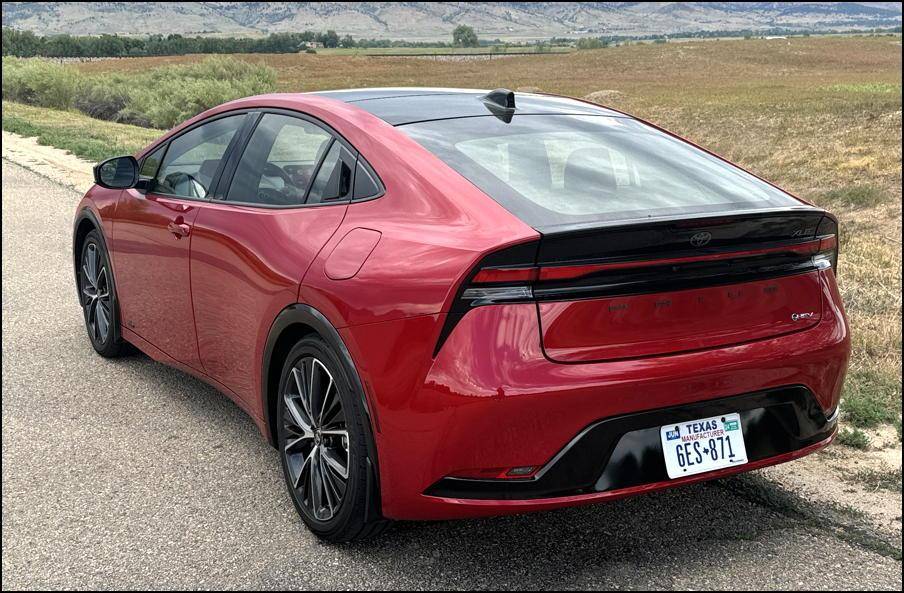
If you want even better fuel efficiency, the Prius Prime offers a plug-in hybrid with approx 44 miles of EV-only range on a full charge, then dropping into the same hybrid system and efficiency numbers. A significant bump up in price but the Prius Prime is one of the best PHEVs on the market. Indeed, when I posted a photo of this Prius XLE one of my Tesla-owning friends said that if Toyota's Prius design looked like this when he was shopping for a newer vehicle, he might have ended up a Toyota owner instead.
2024 Toyota Prius XLE AWD in Supersonic Red, powered by a 2.0L DOHC 16-Vavle VVT-I 4-cylinder engine and continuously variable transmission. BASE PRICE: $32,495.00. Options Included: 12.3" Toyota Multimedia, Special Color, Fixed Glass Roof, Mudguards, Alloy Wheel Locks, Door Edge Guards, Preferred Accessory Package. AS DRIVEN: $36,587.00.
Disclosure: Toyota loaned me the Prius XLE for a week in return for this candid write-up. This article originally appeared on PlanetDave.com with the title "2024 Toyota Prius XLE: Sleeker Every Year".
Hey Dave Taylor wants you to share this!
